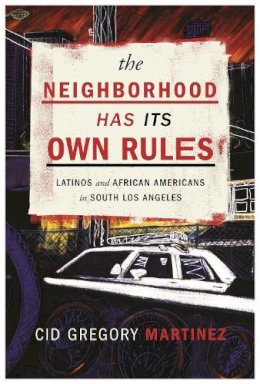9%OFF

Stock image for illustration purposes only - book cover, edition or condition may vary.
The Neighborhood Has Its Own Rules: Latinos and African Americans in South Los Angeles
Cid Martinez
€ 33.99
€ 30.98
FREE Delivery in Ireland
Description for The Neighborhood Has Its Own Rules: Latinos and African Americans in South Los Angeles
Paperback. Num Pages: 272 pages, black & white illustrations. BIC Classification: 1KBBWF; JFSG; JFSL3; JFSL4. Category: (G) General (US: Trade). Dimension: 5817 x 3887 x 18. Weight in Grams: 363.
South Los Angeles is often seen as ground zero for inter-racial conflict and violence in the United States. Since the 1940s, South LA has been predominantly a low-income African American neighborhood, and yet since the early 1990s Latino immigrants—mostly from Mexico and many undocumented—have moved in record numbers to the area. Given that more than a quarter million people live in South LA and that poverty rates exceed 30 percent, inter-racial conflict and violence surprises no one. The real question is: why hasn't there been more? Through vivid stories and interviews, The Neighborhood Has Its Own Rules provides an answer ... Read more
Show LessProduct Details
Format
Paperback
Publication date
2016
Publisher
New York University Press United States
Number of pages
272
Condition
New
Number of Pages
272
Place of Publication
New York, United States
ISBN
9780814762844
SKU
V9780814762844
Shipping Time
Usually ships in 7 to 11 working days
Ref
99-1
About Cid Martinez
Cid Martinez is Associate Professor of Sociology at the University of San Diego. He is the author of The Neighborhood Has Its Own Rules: Latinos and African Americans in South Los Angeles.
Reviews for The Neighborhood Has Its Own Rules: Latinos and African Americans in South Los Angeles
The Neighborhood Has Its Own Rulesis a wonderful testament to the power of ethnography and street-level observations of various alternative means of violence suppression. It provides the possibility of the state resourcing alternative institutions as a means to alleviate inequality. Importantly, these institutions include public education, the churches, and various nonprofit groups who choose to work in high-crime communities.
... Read more
... Read more
